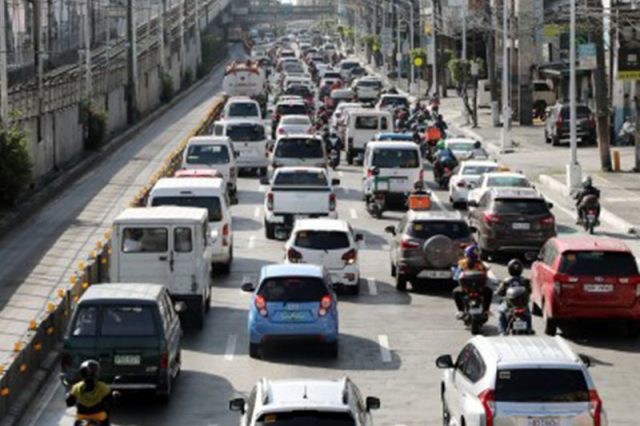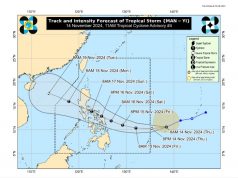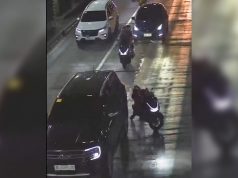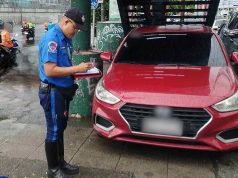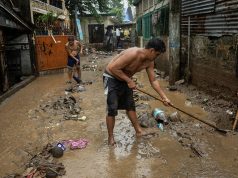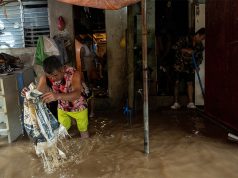Suggestions were raised after the Metro Manila Development Authority reportedly said that it is looking into possibly implementing daylight saving time (DST) to ease the traffic congestion in the metro.
This DST proposal came amid the heavy vehicular traffic observed in the National Capital Region under COVID-19 Alert Level 1, where movement restrictions are more relaxed.
MMDA Chairman Romando Artes reportedly said that DST was among the recommendations received by the government agency in combatting the congestion on the roads.
“Baka daw po puwede na ang pasok sa gobyerno at ang ‘yung mga transaksiyon sa gobyerno ay simulan ng 7 o’ clock at mag-end ng 4 o’ clock,” Artes was quoted in GMA’s “Unang Balita” on Friday.
“‘Yan pong isang oras na adjustment na iyan sa pasok po sa gobyerno ay malaking bagay dahil hindi lamang ang pumapasok sa trabaho sa gobyerno ang apektado niyan, kundi pati na rin po ‘yung mga may transaksiyon sa gobyerno,” he added.
Artes said that the MMDA will look into the proposal.
The report said that based on the agency’s data, there were 405,000 vehicles traversing EDSA daily pre-pandemic.
Before the recent oil price hikes, the number was at 390,000. It went down to 370,000 during the increased prices of petroleum products.
What is DST?
Daylight saving time is defined by timeanddate.com as “the practice of setting the clocks forward one hour from standard time during the summer months, and back again in the fall, in order to make better use of natural daylight.”
This is because days start to get longer as the season shifts from winter to spring and then summer, when the earth’s axis is tilted directly towards the sun.
During this season, those practicing DST maximize the daylight hours.
“The logic is that by springing forward and falling back, people add an hour of sunlight to the end of the work day,” an article from National Geographic reads.
DST is also implemented to reduce the amount of energy needed for artificial light during evening hours.
It is commonly implemented in countries in the Northern Hemisphere such as the United States and those in Europe.
Those in the Southern Hemisphere also implement it, such as some parts of Australia and New Zealand.
Countries in equatorial and tropical climates generally do not implement this as the daylight hours in this area are similar every season.
Those living farther from the equator, on the other hand, experience longer daylight hours during the summer, hence the practice of DST.
DST to resolve traffic?
The DST proposal eyed to combat traffic congestion did not amuse some Filipinos who instead called for the implementation of work from home setup.
“This isn’t a solution lol, this just pushes traffic to a different time slot. Mandatory rotational WFH (work from home) for offices is a better (bandaid) solution IMO (in my opinion),” a Twitter user said in response to MMDA.
“Lol man, just let people work at home and take out that obligatory back-to-office setup. If we can do our jobs at home, give the road to those who actually need it,” another online user said.
RELATED: Traffic, ventilation, fuel prices: Why some employees oppose return of onsite work
A 2014 report by the Japan International Cooperation Agency (JICA) said that the country was projected to lose P3.5 billion daily due to traffic congestion in Metro Manila.
Without new transportation infrastructure, the loss can rise to P5.4 billion daily by 2035, according to the JICA chief representative to the Philippines.
ALSO READ: Telecommuting Act gains buzz online amid talks about return to onsite work
Others suggested that the state of public transport and commuting be improved instead.
“But what does daylight saving time even ACHIEVE???? Just delaying the inevitable, pls. hindi talaga uusad hangga’t ‘di pinapaunlad mass transportation (and) urban development,” a Twitter user commented.
“How about they fix the commute transportation system here in the country instead?” another online user said.
“Sana ini-improve na lang nila mga trains and buses (plus) bike lanes,” a different Filipino tweeted.
“Fix mass public (transportation) and encourage eco-friendly transport like bikes,” another online user said.
The government recently announced the completion of the Metro Rail Transit (MRT) rehabilitation project that was started in 2019 with assistance from the Japanese government.
According to Transport Secretary Arthur Tugade, passengers experiencing unloading incidents in the railway would become a thing of the past.

